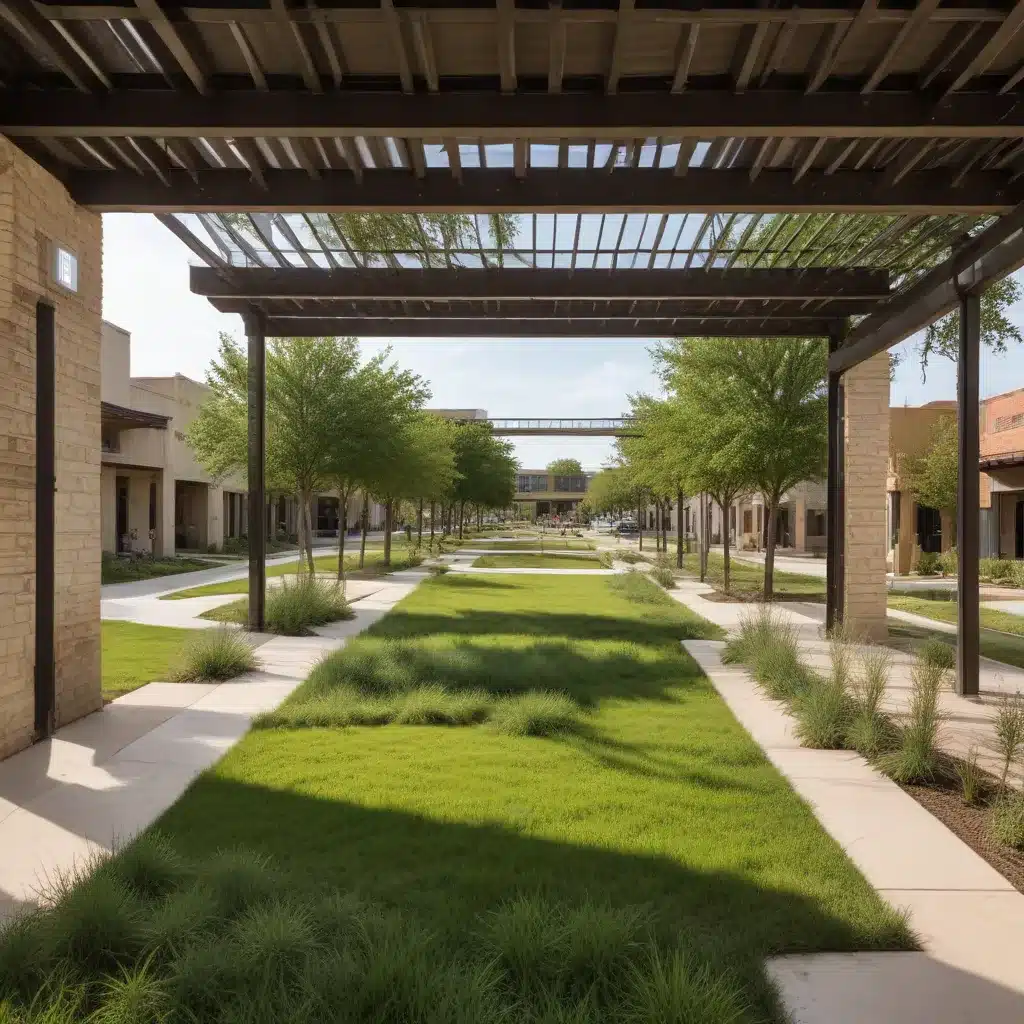
As the urban landscape of Fort Worth continues to evolve, city officials and developers face the complex challenge of preserving precious open spaces while accommodating the demands of rapid population growth and economic expansion. This delicate balance requires a multifaceted approach, drawing upon principles of sustainable development, smart growth, and mixed-use planning.
Urban Planning and Land Use
Principles of Urban Development
At the heart of Fort Worth’s efforts lies the concept of sustainable development – the notion of meeting present needs without compromising the ability of future generations to thrive. This ethos encompasses strategies that harmonize economic vitality, environmental stewardship, and social responsibility. Complementing this is the framework of smart growth, which emphasizes compact, transit-oriented, and pedestrian-friendly development patterns that minimize urban sprawl and preserve natural landscapes.
Integrating these principles, the city has also embraced the mixed-use model, blending residential, commercial, and recreational elements within cohesive, walkable neighborhoods. This approach not only fosters a vibrant, diverse urban fabric but also reduces reliance on automobile-centric infrastructure, thereby mitigating environmental impacts.
Approaches to Open Space Preservation
To safeguard Fort Worth’s precious open spaces, city officials have employed a range of innovative strategies. Parks and greenways serve as vital community assets, providing residents with opportunities for recreation, relaxation, and connection with nature. The city has also explored the use of conservation easements, legal agreements that restrict the development of privately owned land in perpetuity, ensuring the preservation of ecologically significant habitats and natural resources.
Additionally, the practice of adaptive reuse has emerged as a promising approach, repurposing existing structures and infrastructure to accommodate new uses without sacrificing valuable green spaces. This not only reduces the demand for new land development but also preserves the character and historical significance of the urban environment.
Urban Growth Challenges
Population Expansion
As Fort Worth experiences a surge in population growth, driven by a combination of natural increase and net migration, the demand for housing, commercial spaces, and supporting infrastructure has escalated. This rapid expansion poses challenges in balancing the needs of a growing populace with the imperative to safeguard the city’s cherished open spaces and natural assets.
Demographic trends, such as the influx of younger, more diverse residents and the increasing proportion of multigenerational households, further complicate the planning process, requiring a nuanced understanding of evolving housing preferences and community needs.
Infrastructure Considerations
The expansion of Fort Worth’s transportation networks and utility systems plays a crucial role in shaping the city’s development patterns. Ensuring the efficient and sustainable provision of roads, public transit, water, and energy infrastructure requires careful coordination between urban planners, developers, and municipal authorities.
Decisions made regarding the placement and design of these critical systems can either support or hinder the preservation of open spaces, depending on their alignment with the principles of smart growth and sustainable development.
Balancing Priorities
Economic Development
Fostering economic growth is a fundamental priority for Fort Worth, as the city seeks to attract businesses, create jobs, and generate tax revenue to fund public services and infrastructure. Commercial expansion and industrial development are essential components of this strategy, often necessitating the conversion of undeveloped land.
However, city officials and developers recognize the importance of striking a balance between economic progress and environmental preservation. Innovative approaches, such as the integration of green spaces within commercial and industrial projects, can help mitigate the impact of development while still supporting economic prosperity.
Environmental Preservation
Concurrently, Fort Worth is committed to safeguarding its ecological resources and biodiversity. The city’s natural assets, including its network of parks, greenways, and riparian corridors, are not only cherished by residents but also play a crucial role in maintaining a healthy, resilient environment.
Preserving these areas not only provides recreational and aesthetic benefits but also supports essential ecosystem services, such as stormwater management, air filtration, and carbon sequestration. Achieving this balance requires a comprehensive understanding of the interdependence between the built and natural environments.
Stakeholder Engagement
Community Participation
Engaging the local community is a cornerstone of Fort Worth’s approach to balancing open spaces and development. Through robust public outreach and collaborative planning efforts, city officials seek to understand the priorities and concerns of residents, ultimately shaping policies and strategies that reflect the aspirations of the community.
By fostering open dialogue and incorporating public feedback, the city can better align its development plans with the values and needs of the people it serves, ensuring a more equitable and inclusive vision for the future of Fort Worth.
Policy and Regulations
To translate the city’s vision into tangible outcomes, Fort Worth has refined its zoning and land use codes to incentivize the preservation of open spaces and the integration of sustainable design principles. These regulatory frameworks, coupled with targeted development incentives, aim to create a favorable environment for developers to contribute to the city’s open space network while pursuing their economic objectives.
Through a collaborative approach that balances the interests of various stakeholders, Fort Worth continues to evolve as a vibrant, livable city that celebrates its natural assets while embracing the demands of growth and progress. As the city’s residents and leaders work in tandem, the future of Fort Worth holds the promise of a harmonious coexistence between the built and natural environments, setting an example for sustainable urban development across the region.
For more information on how TriCounty Tree Care can support your landscape design and plant healthcare needs, visit www.tricountytreecare.com.


